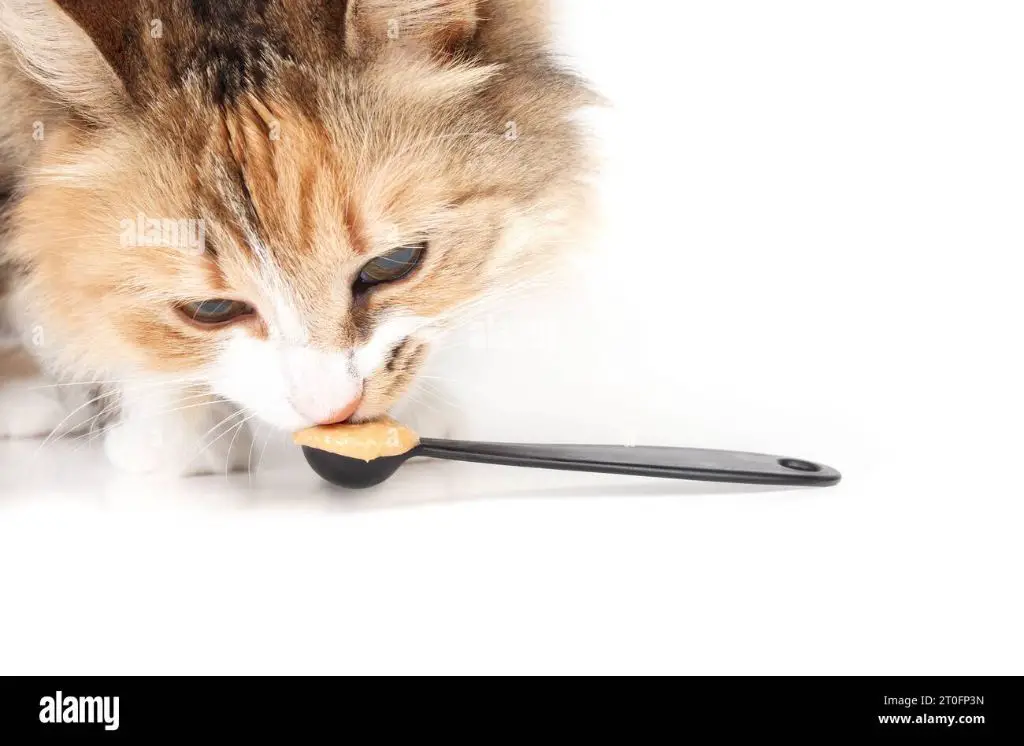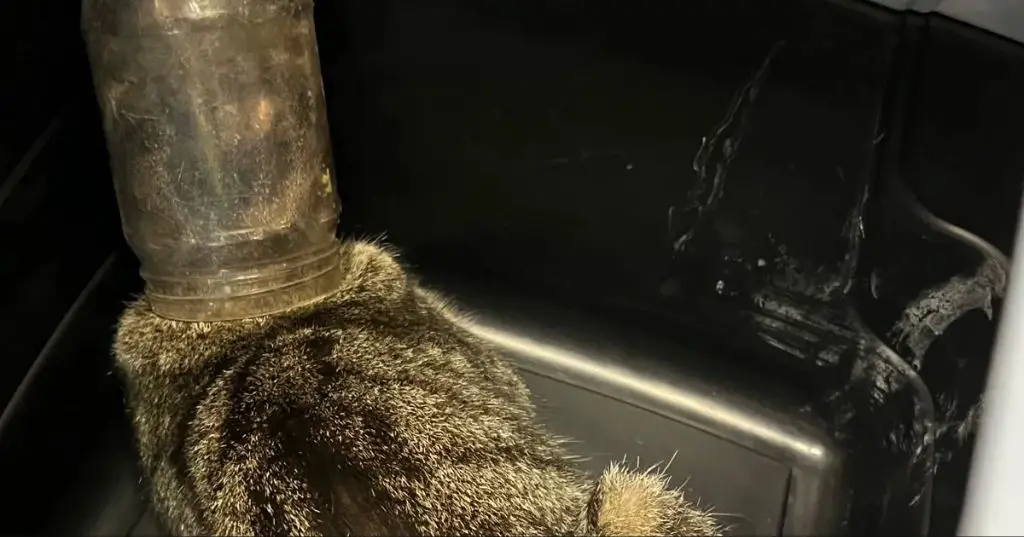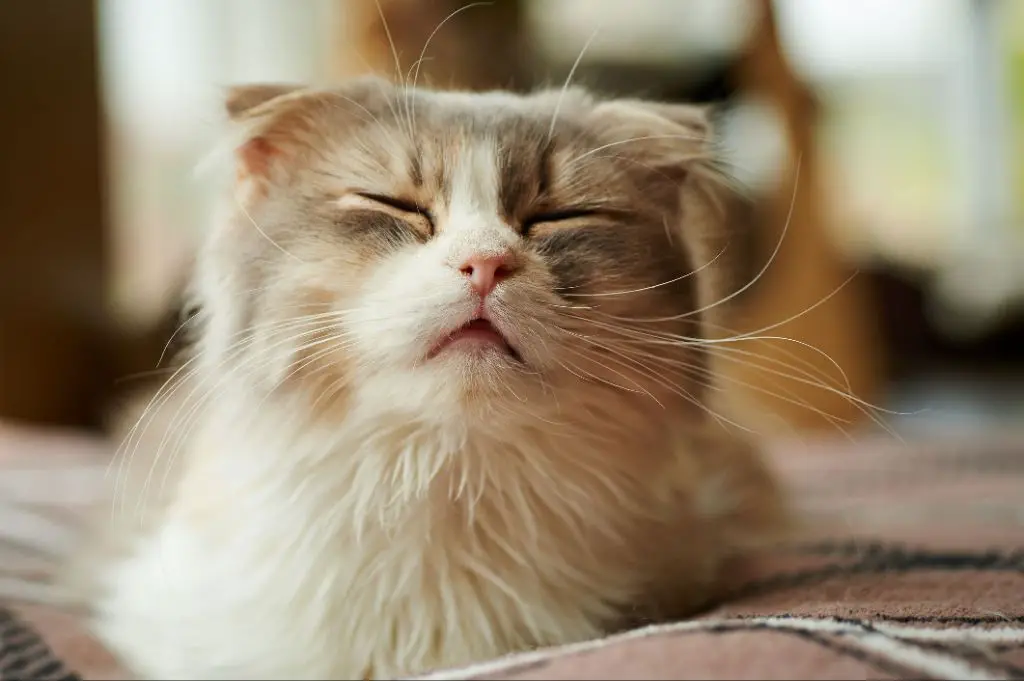Peanut butter is a popular spread that many pet owners enjoy sharing with their cats. This article will explore whether cats can safely eat peanut butter, the potential benefits and risks, proper serving sizes, tips for feeding, what types of peanut butter to choose, signs of an allergic reaction, and some peanut butter alternatives. The goal is to comprehensively cover everything cat owners need to know about sharing peanut butter with their feline companions so they can make informed decisions.
Is Peanut Butter Safe for Cats?
While many pet owners are tempted to share a bit of peanut butter with their feline friends, the answer is usually no—peanut butter is not recommended for cats. Peanut butter is not toxic to cats, but it does pose some health risks that you should consider before feeding it to your cat.
Peanut butter is very high in fat and often contains added sugar, both of which can cause gastrointestinal upset and diarrhea in cats. Additionally, peanut butter usually provides no nutritional value for obligate carnivores like cats who require a meat-based diet. The high calorie and fat content may also lead to unhealthy weight gain.
While small, occasional portions of all-natural, unsweetened peanut butter are unlikely to cause harm, it provides no health benefits and may pose choking hazards or lead to pancreatitis. Most veterinarians recommend avoiding feeding peanut butter to cats and sticking to high-quality cat foods and treats designed for feline nutrition.
Overall, peanut butter is not recommended for cats since it provides minimal nutritional value and poses some health risks. Pet owners are better off providing cats an appropriate meat-based diet and avoiding sugary, fatty human foods like peanut butter.
Benefits of Peanut Butter for Cats
Peanut butter can provide some benefits for cats in moderation. The main potential benefits include:
Protein: Peanut butter is high in plant-based protein. This makes it a good supplemental protein source for cats if provided occasionally in small amounts. Cats are obligate carnivores and require a meat-based diet, but limited peanut butter can help add protein variety.
Healthy Fats: Peanut butter contains heart-healthy monounsaturated fats. This includes oleic acid which may help regulate cholesterol. The fat content also makes it palatable for many cats.
Vitamin E: Peanut butter is high in vitamin E. This is an antioxidant that supports immune health and skin/coat condition. Vitamin E helps protect cell membranes.
Niacin: Peanut butter contains niacin (vitamin B3). Niacin is important for energy metabolism in cats. It helps convert nutrients into usable energy.
However, peanut butter should only be fed occasionally and in small amounts. It does not provide complete nutrition for cats. Check with your veterinarian before feeding.
Risks and Concerns
While peanut butter is not toxic to most cats in small amounts, there are some risks and concerns to be aware of before feeding it to your feline friend. One of the biggest risks is choking. According to PetMD, “Due to its thick, sometimes chunky consistency, peanut butter is a choking hazard for felines.” [1] Cats have small mouths and throats compared to humans, so peanut butter can easily get stuck. Always monitor your cat when feeding peanut butter and consider mixing it with water to thin it out.

Another concern is the high fat content in peanut butter. PetMD warns “Too much fat can lead to pancreatitis and other digestive issues.” [1] Feed peanut butter in very small amounts and limit high-fat treats in general. Obesity is a common problem in indoor cats, so monitor your cat’s weight if giving peanut butter regularly.
Finally, some cats may be allergic to peanuts. According to Chewy, “Allergies are always a possibility when introducing new foods.” [2] Look for symptoms like vomiting, diarrhea, itching, or skin irritation. Discontinue feeding peanut butter if you suspect an allergy and consult your vet. It’s best to introduce new foods slowly and watch for any adverse reactions.
How Much to Feed
When given occasionally as a treat, only a small amount of peanut butter should be fed to cats. About a teaspoon is plenty. Overfeeding peanut butter can lead to gastrointestinal upset and diarrhea due to the high fat content.
Since peanut butter is not a complete and balanced food source for cats, it should only make up around 10% of your cat’s daily caloric intake. Anything more on a regular basis can lead to nutritional deficiencies over time.
Try to limit peanut butter treats to no more than 2-3 times per week at most. The high fat and calorie content can quickly lead to weight gain if overfed. Portion control is key.
Also be aware that some cats may not self-regulate well when offered peanut butter, especially if they have a strong affinity for it. In those cases, owners need to monitor treat time closely to avoid overconsumption.
Overall, peanut butter should be an occasional treat in tiny amounts, not a dietary staple. Check with your veterinarian if you have questions about appropriate portion sizes for your individual cat.
Tips for Feeding
If you do choose to share a small amount of peanut butter with your cat, here are some tips for safe feeding:
- Mix a teaspoon of peanut butter into your cat’s regular food. This will dilute the peanut butter and prevent your cat from eating too much at once.
- Let your cat lick a small amount of peanut butter off your finger or a spoon. Limit it to no more than a teaspoon.
- Freeze dollops of peanut butter into licks and give as an occasional treat. The cold temperature will force your cat to lick slowly.
- Choose a natural peanut butter without xylitol or other harmful ingredients (cite: https://www.hillspet.com/cat-care/nutrition-feeding/can-cats-eat-peanut-butter).
- Always supervise your cat when feeding peanut butter to monitor for signs of an allergic reaction.

Feeding small amounts of peanut butter infrequently and taking precautions can allow your cat to enjoy it safely.
What Type of Peanut Butter
The biggest concern with feeding peanut butter to cats is avoiding products that contain xylitol. Xylitol is an artificial sweetener that is extremely toxic to cats [1]. Even small amounts can cause low blood sugar, seizures, liver failure, and even death [2].
When choosing a peanut butter, it is crucial to pick a brand that does not have xylitol in the ingredients list. Some peanut butters that are safe for cats include Skippy, Jif, Peter Pan, Reese’s, and Trader Joe’s [3]. Checking the label carefully before feeding is essential.
It’s also best to avoid peanut butters with added salt or sugar. Opt for all-natural peanut butter without extra ingredients. Always double check labels before feeding peanut butter to cats.
Signs of an Allergic Reaction
Some cats may have an allergy or sensitivity to peanuts or peanut butter. According to The Rescue Vets, the most common signs of an allergic reaction include:
- Vomiting
- Diarrhea
- Gas
- Abdominal pain
- Intense itching, especially around the head and ears
- Sneezing
- Agitation

If your cat experiences any of these symptoms after eating peanut butter, stop feeding it and see your veterinarian. They can help diagnose a peanut allergy through testing and advise you on potential treatments if needed.
According to WagWalking, some cats may only experience mild itching or irritation when exposed to peanuts or peanut products like peanut butter. However, other cats can have more severe reactions including swelling of the throat, difficulty breathing, collapse, and possibly death in extreme cases.
Other Nut Butters
In addition to peanut butter, there are other nut butters that cat owners may consider feeding their cats, such as almond butter, cashew butter, and sunflower seed butter. These nut butters can provide similar benefits as peanut butter, such as healthy fats, protein, and fiber. However, they also come with similar risks.
Almond butter contains high levels of vitamin E, an antioxidant that supports skin and coat health in cats. It also provides magnesium, manganese, and monounsaturated fats. However, almonds contain trace amounts of cyanide so almond butter should only be fed occasionally and in very small quantities to avoid toxicity [1].
Cashew butter offers zinc, copper, magnesium, and antioxidants. Some vets recommend cashew butter over peanut butter for cats with food allergies. However, it’s still high in calories so should only be a occasional treat. And some cats may be allergic to cashews as well [2].
Sunflower seed butter provides vitamin E, selenium, and magnesium. It tends to be lower in saturated fat than peanut or other nut butters. But it’s still dense in calories and should only be fed in moderation. Too much can lead to weight gain or upset stomach [3].

As with peanut butter, these other nut butters should be 100% pure with no added sugar or other ingredients. Only small amounts should be fed occasionally as a treat.
Conclusion
In summary, cats can eat peanut butter in moderation as an occasional treat. Peanut butter without xylitol is generally safe for felines. Just be sure to only give a small amount, about a teaspoon, to avoid digestive upset. Opt for natural peanut butter without added sugars or salt. Monitor your cat for signs of an allergy or sensitivity.
When feeding peanut butter to your cat, introduce it slowly and look for any adverse reactions. Provide plenty of water to help them digest it. There are also alternatives like almond or cashew butter that may be easier for some cats to tolerate. As with any treat, peanut butter should only make up a tiny portion of your cat’s overall diet.
While peanut butter can be a nice reward in limited quantities, make sure your cat’s main nutrition comes from a balanced cat food recommended by your veterinarian. With precautions and moderation, sharing human foods like peanut butter can be a fun way to bond with your feline friend.

